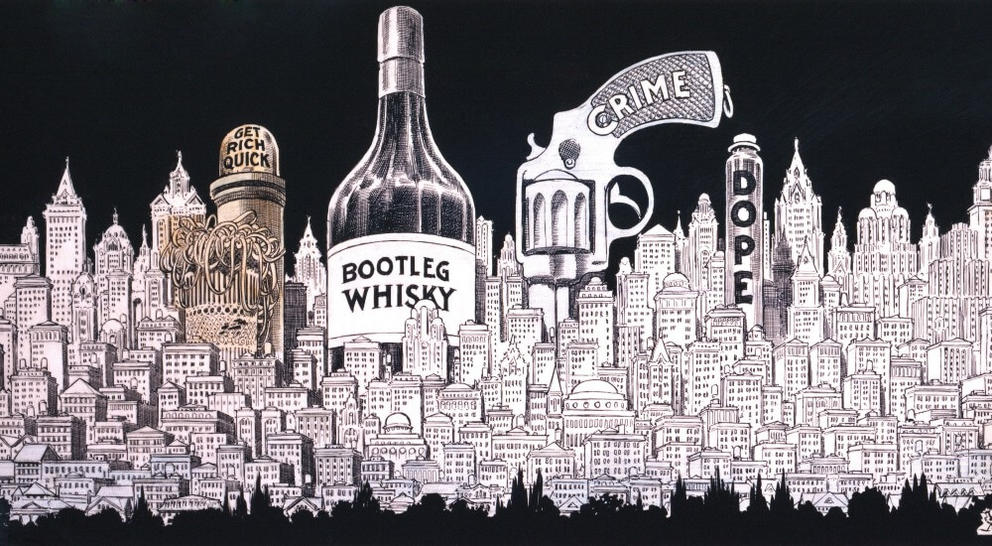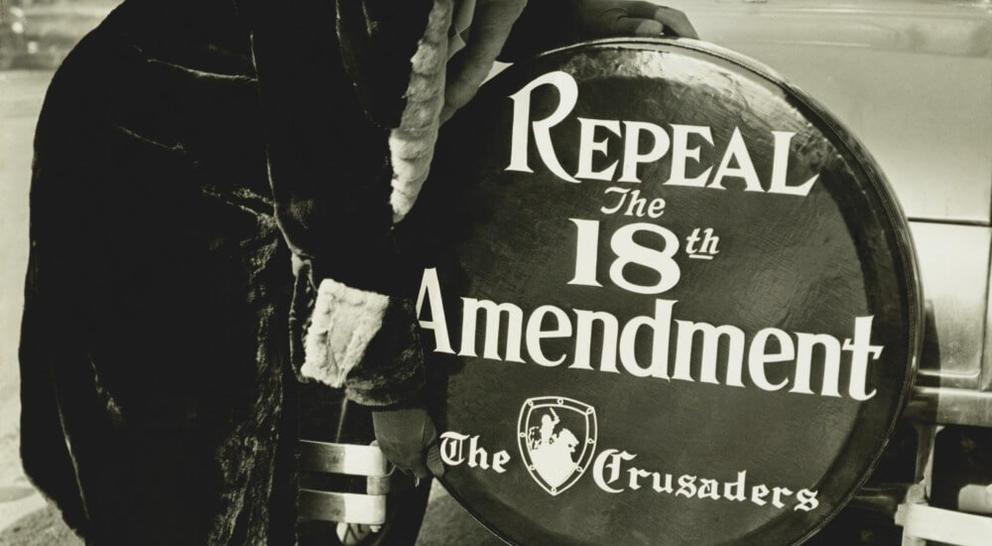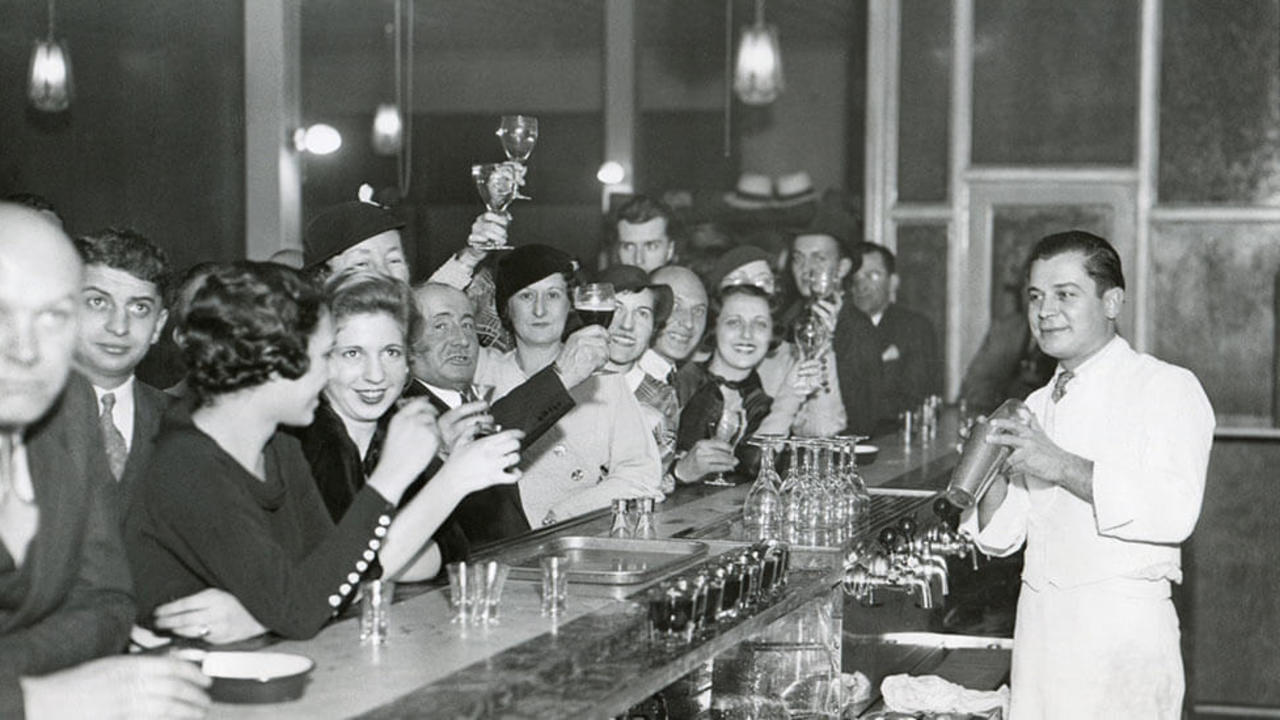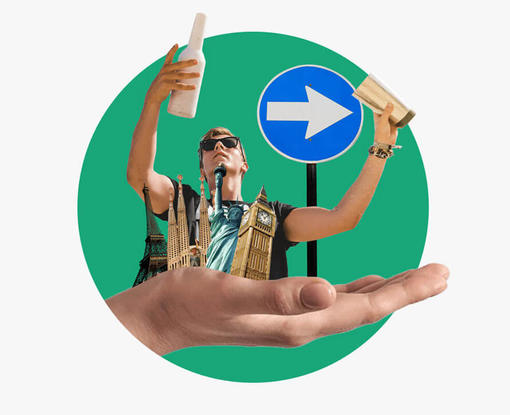It may be hard and painful to imagine, but there was once a time not so long ago when the production, importation, transportation and sale of alcohol was completely banned across the whole of the United States for the 13-year period known as Prohibition.
The Prohibition Era is an extremely interesting period of history to delve into as it has shaped the cocktail industry and bar scene as we know them today. Here is everything you need to know about Prohibition, how and why it came about, what life was like under such restrictive alcohol laws and why it ended.
What Was Prohibition?
Prohibition was the period between 1920 and 1933 when the United States enforced a constitutional ban on the production, importation, transportation and sale of alcohol and intoxicating beverages. This law was outlined by the 18th Amendment to the constitution, ratified in 1919. The aim was to completely eradicate the consumption of alcohol by cutting it off at its source, in other words making producing, importing and selling alcohol illegal rather than simply banning drinking alcohol altogether. In fact, there was nothing at all in the law that prohibited drinking alcohol, which is why some very wealthy families bought alcohol in bulk before Prohibition was enforced and were able to carry on drinking legally in their homes throughout the era.
How and Why Did Prohibition Come About?
While Prohibition officially began in 1920, the wheels were already in motion decades earlier. The seeds for the Prohibition Era were laid as early as the 18th century when the temperance movement began to form, fully blossoming in the 1820s. The temperance movement crusaded against the culture of pervasive heavy drinking. They weren’t just buzzkills trying to spoil everyone’s fun – excessive drinking actually was turning into a huge problem. Yearly alcohol consumption peaked at 7.1 gallons in 1830, compared to the mere 2 gallons that is consumed every year in America nowadays. In 1827, the state of Maine alone, that had a population of only 350,000, manufactured and sold a staggering 1,333,160 gallons of liquor. For many, alcohol consumption became synonymous with moral depravity and was viewed as the fundamental ill from which stemmed a whole host of social issues like crime, violence and poverty.
There was a strong desire for social reform in the air which continued to grow; just as the anti-slavery movement and women’s rights movement gained momentum, so too did the temperance, or ‘dry’ movement. It increasingly won the support of powerful individuals and politicians, giving the movement legitimacy and authority. In 1815 for example, respected physician and former Continental Congress Chairman Benjamin Rush published ‘An Inquiry into the Effects of Ardent Spirits upon the Human Body and Mind’, which gained a lot of traction and was the basis for lots of the ‘dry’ propaganda that appeared subsequently. By 1835, over 8,000 temperance societies across the nation had formed, and well over a million Americans were enrolled members.
Founded in 1893, the Anti-Saloon League became a powerful organisation with branches nationwide whose main focus was to instate Prohibition, and was very successful in applying pressure on those with the power to do so. Their success began with enacting local prohibition laws in different states, and by 1916, over half of them had put statutes in place that prohibited alcohol. The 18th Amendment to the US Constitution was ratified in 1919 and the Volstead Act was passed later the same year. The Volstead Act and 18th Amendment went hand in hand, as the Volstead Act served to clarify that a beverage with over 0,5% ABV counted as alcohol and that owning any equipment to manufacture alcohol was illegal. It also set out the punishments, fines and prison sentences for violating the laws of Prohibition. A year after the signing of the 18th Amendment marked the official start of the Prohibition Era, on the 17th January 1920.
What Was Life Like Under Prohibition?

It may all sound fairly bleak at the moment, and a world without drinks and cocktails certainly sounds bland and boring to us. Avid 18th Amendment supporters were so devoted to the cause that they even tried to have the Bible rewritten to remove all references to alcohol. But the Prohibition Era wasn’t all doom and gloom and in fact the strict law didn’t stop this decade from being that of the Roaring Twenties and actually a time when the cocktail industry flourished. People worked around the law in various ways, some did so completely legally and others had to get creative.
Loopholes
People took advantage of a number of loopholes in the law so that they could carry on enjoying a drink legally. Since the Amendment took a year to enforce, lots of people stocked up enough to see them through years of Prohibition. For those who didn’t have the means to do so found other loopholes, like the fact that doctors were allowed to prescribe whisky, distilled spirits and wine, or that the manufacturing of wine to be used for sacramental or religious purposes was legal, which brought about a suspicious rise in the number of rabbis and priests.
While none of those practises stuck, and drinking alcohol is sadly no longer used as prescribed medicine, there are a few legacies of the Prohibition Era that are still present today, like booze cruises. Nowadays, booze cruises are a fun way to hang out with friends on a boat over a few drinks and soak up the sun and sea views. But when they first appeared during Prohibition, booze cruises were a great way to skirt around the law and sail to international waters so that alcohol could be served legally. They were also referred to as ‘cruises to nowhere’ as there was no final destination, and the ships would most often just sail around in circles while passengers enjoyed a cocktail or two.
Speakeasies
The emergence of speakeasies is another key legacy of Prohibition and has shaped the bar scene as we know it today. Unlike booze cruises, speakeasies were completely illegal, but this didn’t stop them from being extremely widespread. Speakeasies get their name from their secretive and hidden nature; you would have had to know or have been told of the exact location and then gone to what looked like any other door, knocked and whispered a codeword to be let in. It is estimated that there were up to as many 100,000 speakeasies in New York City alone.
Some of the original speakeasies are still around today, like 21 Club in Manhattan. 21 Club opened its secret doors in January 1930, and after a raid, the owners had an architect design a system of camouflaged doors, invisible chutes, quick-release bar shelves and a hidden wine cellar, which were pretty common features in speakeasies in case of a raid. It worked for 21 Club as they were never caught again. Today they are able to thrive out in the open and serve as a fascinating window into this time of underground bar culture. Even bars that weren’t speakeasies during Prohibition seek to emulate the mystery and secrecy of speakeasies, and this has become a popular trend in the bar industry the world over.
Gangsters and Their Illegal Empire
The only way that speakeasies were able to exist was through illegal activities to stock their bars. One way that speakeasies would do this was through the huge network of organised crime that grew under Prohibition. Organised crime became an entire empire and meant big bucks; it’s estimated that $2,000 million worth of business was transferred from the brewing industry and bars to bootleggers and gangsters during Prohibition. This illegal network wasn’t just made up of gangsters, but also involved the cooperation of Prohibition Bureau agents, police, judges and politicians who would receive monthly bribes of up to $300,000 a month to keep quiet. You may have heard of some of the biggest gangsters that ran significant operations, like Al ‘Scarface’ Capone who supposedly raked in a staggering $60 million in alcohol sales in 1927 alone.
The alcohol itself either came from illegal smuggling, which was a $3 billion industry by 1930, or by illegal brewing. Homemade wine was a popular alcohol to make, and the consumption of wine from 1925-29 was actually triple the amount that Americans drank in the 5 years before Prohibition. Brewing bathtub gin also became a popular way to make alcohol at home. This homemade spirit was called bathtub gin because the bottles were too big to be topped up using a normal size sink, so they had to use bath taps, but it was also sometimes brewed in the bathtub itself using cheap grain alcohol.
It comes as no surprise that bathtub gin was pretty undrinkable. The thought of bathtub gin might make gin lovers wince, but the cocktail industry actually owes the disgusting taste of this illegal spirit a lot; because drinking it on its own was completely out of the question, bartenders had to get creative with cocktails and flavours that would take the edge off the gin and transform it into a delicious drink. The Bee’s Knees cocktail is a great example of this, using the strong flavours of honey, lemon juice and orange juice to mask the gin. Some other classic cocktails were born of the Prohibition Era, like the Mary Pickford, French 75, the Sidecar and the Old Fashioned. While these are all delicious cocktails, homebrewing wasn’t all peachy, and drinking tainted bootleg liquor or potential substitutes like filtered antifreeze caused paralysis, blindness and even the deaths of 10,000 people.
So What Happened to Prohibition?

Prohibition came to an end after 13 years, when it was finally repealed on the 5th December 1933, making thousands of Christmas wishes come true and also making the 18th Amendment the only constitutional amendment ever to be repealed. Even Franklin D. Roosevelt was relieved to see the end of Prohibition, famously saying, ‘’What America needs now is a drink.’’ It’s a fairly unanimous opinion that Prohibition didn’t work, and is remembered as a national experiment gone wrong.
Drinking never stopped, it was just pushed underground and into a vast illegal network of crime, corruption and gangsters. Prohibition was extremely costly, difficult to enforce, and ultimately wasn’t proving to be a solution to any of the issues that it sought to resolve, and was in fact generating a whole host of new problems. This being said, we are grateful for the mark that Prohibition made on the cocktail and bar industries, giving us some of our favourite drinks, speakeasies, booze cruises and a great appreciation for our freedom to enjoy all of these finer things in life completely legally.
The Roaring Twenties was the age of jazz, changing attitudes towards women and the decade that saw cocktails and bar culture come into their own, which is probably why many bars today seek to emulate the 20s in America – spirits may have been harder to come across but spirit certainly wasn’t.

